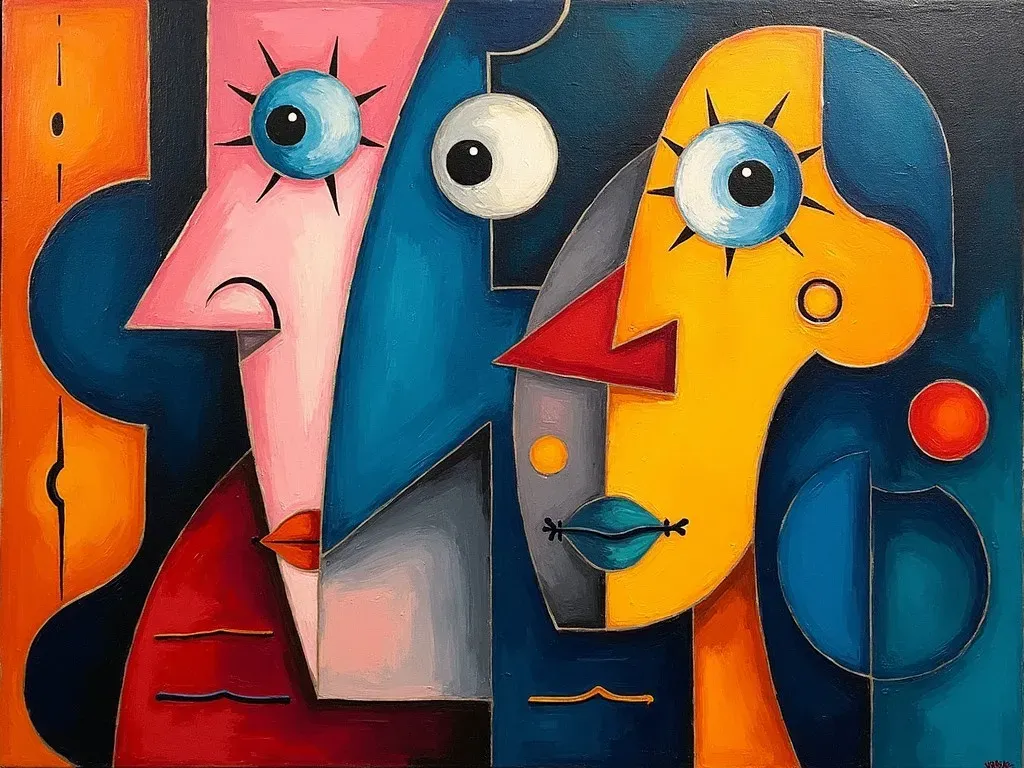Pablo Picasso oil paintings are not just artworks; they are historical statements that reflect the complexity of the human experience, societal issues, and the evolution of artistic norms. Renowned for his unique style and pioneering contributions to modern art, Picasso’s oil paintings have left an indelible mark on the art world.
The Impact of Pablo Picasso’s Oil Paintings
Pablo Picasso, born on October 25, 1881, in Málaga, Spain, transformed Western art through his innovations, including the development of Cubism alongside Georges Braque and the invention of synthetic cubism. His artistic output is prodigious, comprising over 20,000 artworks that range from oil paintings and prints to drawings, sculptures, and ceramics. A few of his works have emerged as iconic representations of the 20th century.
Iconic Oil Paintings
Some of his most significant pieces include:
-
Guernica (1937): This monumental oil painting is a political statement against war, specifically inspired by the bombing of Guernica during the Spanish Civil War. The dramatic monochromatic palette and expressive figures communicate the horror of conflict.
- For more information, visit Guernica on Britannica.
-
La Vie (1903): A quintessential representation of Picasso’s Blue Period, this oil painting depicts themes of poverty and existential despair.
- Learn more at La Vie on Wikipedia.
-
The Weeping Woman (1937): This series of oil paintings symbolizes the suffering caused by war, with Dora Maar as the muse, showcasing Picasso’s emotional response to the tragedies of his time.
- Find more at The Weeping Woman on Wikipedia.
-
Les Demoiselles d’Avignon (1907): Often seen as a turning point in modern art, this oil painting challenged traditional representations of subjects and introduced a radical break with classical perspective.
- Discover more about it at MoMA Collection.
| Painting Title | Year | Style | Significance |
|---|---|---|---|
| Guernica | 1937 | Surrealism | Powerful anti-war statement |
| La Vie | 1903 | Blue Period | Depicts themes of poverty and despair |
| The Weeping Woman | 1937 | Cubism | Illustrates the emotional impact of war |
| Les Demoiselles d’Avignon | 1907 | Proto-Cubism | A radical departure from traditional artistry |
The Evolution of Oil Techniques
Picasso’s use of oil paints evolved throughout his career. His earlier works often employed traditional Techniques, but he soon began experimenting with form, color, and composition. The innovative use of oil on canvas allowed him to blend multiple aspects of subjects into single works, reflecting his complex perceptions of reality.
Exploring Picasso oil paintings for sale
For collectors and enthusiasts, acquiring a Picasso oil painting is a meaningful endeavor. The market for Picasso’s works has remained robust, with original pieces frequently achieving staggering sums at auction. Reproductions and prints are also available, offering art lovers a chance to appreciate his unique style without the hefty price tag of an original work.
Types of Picasso Oil Paintings Available
- Original Works: Extremely rare and valuable, often found through high-profile auction houses.
- Limited Edition Prints: Created later in Picasso’s life, these prints capture the essence of his style.
- Reproductions: Affordable prints and canvases are available that replicate his famous works.
Reference Video
Masterpieces of Cubism
In addition to oil paintings, Picasso’s contributions to Cubism transformed the art landscape. The movement is characterized by abstracted forms and fragmented subjects, often depicted from multiple viewpoints.
Key Characteristics of Cubism
- Multiple Perspectives: Portraying subjects from various angles in a single artwork.
- Geometric Shapes: Using forms like cubes, spheres, and cones.
- Fragmentation: Breaking the subject into smaller parts, often rearranged in abstract ways.
| Feature of Cubism | Description |
|---|---|
| Multiple Perspectives | Allows viewers to understand a subject holistically by viewing it from different angles. |
| Geometric Shapes | Simplified forms that eliminate unnecessary details. |
| Use of Color | Picasso often employed a limited color palette to enhance emotional expression. |
Frequently Asked Questions (FAQs)
What is the significance of Picasso’s oil paintings?
Picasso’s oil paintings are significant as they not only demonstrate artistic innovation but also reflect the sociopolitical landscape of his time.
Where can I find authentic Picasso oil paintings for sale?
Authentic Picasso works can typically be found at major auction houses like Sotheby’s and Christie’s, as well as through reputable galleries specializing in modern art.
How did Picasso use color in his oil paintings?
Picasso had a distinctive ability to utilize color to evoke emotion. His Periods, such as the Blue Period and the Rose Period, showcased his ability to connect color with mood and theme.
What techniques did Picasso use in his oil paintings?
Picasso employed various techniques including impasto, glazing, and sgraffito, allowing him to add texture and depth to his works.
Are there exhibitions dedicated to Picasso’s oil paintings?
Yes, many art museums and galleries have dedicated exhibitions to Picasso’s work, showcasing various periods and styles of his oil paintings.
Conclusion
Exploring the realm of oil painting Picasso reveals not only the genius of one artist but also the evolution of modern art itself. His works continue to resonate, inviting viewers to engage with the emotions and thoughts encapsulated within each stroke of paint. Whether you are a seasoned collector or a casual admirer, Picasso’s impact on the art world remains undeniable and profound.
